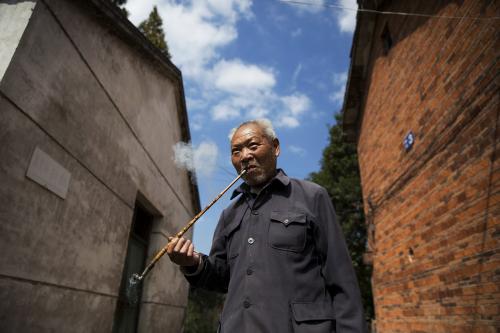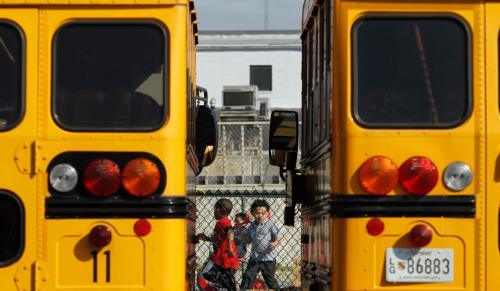Last December, the U.S. surgeon general raised an alarm regarding the rise in e-cigarette use among the nation’s youth, saying it has increased “at a rate of epidemic proportions.” According to the 2019 National Youth Tobacco Survey, over 5 million youth are currently using e-cigarettes, primarily the JUUL brand, with nearly 1 million youth using the product daily. This substantial increase in teenage vaping is seriously impacting middle and high schools across America.
Teen vaping has gained a significant amount of media attention since President Trump expressed concern about vaping’s public health effects in a September meeting with the FDA. While Trump had suggested a ban on flavored e-cigarettes, it seems that he has backed away from that idea due to political fallout among voters.
Vaping is on the rise in schools
Of the youth population, 27.5% regularly use e-cigarettes, approximately 22 percentage points higher than high schoolers who smoke normal cigarettes. These numbers are alarming because vaping has various types of negative impacts on health. First, e-cigarettes have been linked to severe lung and heart diseases. Second, e-cigarettes with high levels of nicotine can put youth at risk for developing a nicotine addiction which subsequently hinders brain development. Third, e-cigarettes expose youth users to harmful substances, like heavy metals, and are a gateway to smoking cigarettes.
E-cigarettes are causing public health and disciplinary concerns in schools nationwide. Teenagers are being hospitalized for vaping-related diseases, with at least one confirmed death. Teachers and school administrators are trying, yet failing, to prevent students from vaping in classrooms and on school campuses. Administrators are struggling to combat vaping with both punitive and restorative disciplinary measures, and students continue to vape even when facing penalties as serious as suspension. With the number of youth e-cigarette users increasing in the last decade and roughly doubling since 2017, there may be a need for new policies that could standardize an approach to combating teenage vaping and help curb the impact on students.
President Trump proposed two routes to tackle vaping: a ban on flavored e-cigarettes, and raising the minimum age of purchase on e-cigarettes from 18 to 21. According to recent reporting, Trump has delayed a flavor ban. In response to Trump’s inaction, the House Energy and Commerce Committee passed a bill on Tuesday that would ban flavored tobacco products, raise the minimum age of purchase to 21, and restrict online sales of tobacco products. Despite the bill in the House, Trump is meeting with vaping industry executives and public health advocates. It is unclear how vaping regulations will unfold, but it is worthwhile to examine potential plans and their implications on students.
Examining a potential ban of flavored e-cigarettes
Major vaping companies, like JUUL Labs, have pushed against the flavor ban, which may have influenced Trump’s sudden decision to pull back from the policy. JUUL, which controls three-fourths of the e-cigarette market and has a forecasted 2019 revenue of $3.4 billion, is being investigated by the Food and Drug Administration (FDA) for allegedly illegally advertising its products as less harmful than regular cigarettes. Consequently, JUUL altered its leadership and marketing practices by suspending all advertising in the U.S. and replacing its CEO.
Banning the sale of flavored e-cigarettes would have hefty implications on vaping companies since they employ thousands of small shop owners and hardware designers. Banning the legal sale of flavored vaping products would also create a robust black market for e-cigarettes. A black market for vapes could be lethal for youth who find themselves smoking from cartridges cut with cheaper substances.
Trump faced pressures from the vaping lobby, which flocked to the nation’s capital claiming, among other things, that flavored e-cigarettes help smokers quit regular cigarettes. It is unproven, however, if there are health benefits to a regular smoker who instead becomes a long-term vaper. Research further suggests that while e-cigarette use was associated with high rates of smoking cessation, more than 80% of smokers who entered a randomized trial to stop smoking with the help of e-cigarettes continued to smoke e-cigarettes a year later. This is especially concerning given that smoking e-cigarettes has a negative impact on health.
Should the age limit be increased?
Whether by congressional action or Trump’s executive authority, the age minimum to purchase e-cigarettes can be changed from 18 to 21. Some vaping advocates believe that youth vape because of the nicotine in e-cigarettes. While the nicotine content in e-cigarettes can get students addicted to vaping, our analysis of the 2018 National Youth Tobacco Survey indicates that the most students report vaping for the flavor (about 35%) and because their family and friends use e-cigarettes (about 30%). Increasing the age of purchase to 21 would not address either of those incentives to vape.
Changing the age limit to 21 might fail to prevent many minors from getting their hands on e-cigarettes; in fact, 19% of youth report first trying an e-cigarette before the age of 13. Starting at the age of 13, rates of youth vaping in each age group increase. In 2018, 22% of 16-year-olds and 24% of 17-year-olds reported smoking an e-cigarette. This is an increase from 2017, when 11% of 16-year-olds and 14% of 17-year-olds reported smoking an e-cigarette. This shows that students are gaining access to and using e-cigarette products at an age well below the current age limit of 18. Further, over 70% of youth e-cigarette users report buying e-cigarettes from people rather than a shop, and 27% of frequent users reported living with someone who smoked. Youth vapers are typically not going to shops to buy vapes, they are buying vapes from their peers. Thus, minors who vape may still have access, although slightly restricted, to flavored e-cigarettes from friends and family who are over the age of 21.
We cannot know what will happen to e-cigarettes if the minimum age increases, but we can look to the experience of increasing the minimum age on alcohol for some suggestive evidence. According to the 2017 Youth Risk Behavior Survey, 30% of youth drank some amount of alcohol while 14% of youth engaged in binge drinking. Though raising the age limit for purchasing alcohol helped reduce youth alcohol consumption, youth consumption of alcohol persists.
State and local action
Federal action to stop the teenage vaping epidemic will likely fall short on some, if not most, metrics. Consequently, the onus will fall on state governments, boards of education, and local school districts to combat the issue of teen vaping. Several localities have already taken vaping into their own hands. For example, four states have banned vaping on school grounds, seven states have enacted or will enact a ban on flavored vaping products, and 18 states have raised the legal smoking age from 18 to 21 in the past three years. While the numbers show that vaping has increased drastically even with these state-level bans placed in populous states like New York and Texas, the effect of these state policies is largely unknown.
Beyond traditional tactics like monitoring bathrooms and hallways to confiscate vaping devices, states could also take a new approach to fighting the e-cigarette epidemic, like offering grants to schools to invest in on-site counseling. South Portland High School has been addressing teen vaping by offering mental health services and guiding students away from the social influences that encourage vaping. This school—and others, like Arrowhead High School in Milwaukee—have also been getting students involved in their anti-vaping campaign via peer-to-peer education.
The teenage vaping crisis calls for innovative solutions. In collaboration with federal and state action, local actors can look at the FDA’s Youth Tobacco Prevention Plan for insight on ways to initiate community-supported approaches that restrict access to vaping products, curb teenage-focused marketing tactics, and educate teenagers about the harmful, long-term effects of vaping.







Commentary
The youth vaping epidemic: Addressing the rise of e-cigarettes in schools
November 22, 2019